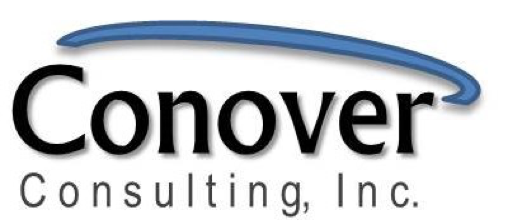What Does Our Aging American Workforce Mean for Your Organization?
A quarter century ago, the October 1998 issue of HR Magazine featured a cover story titled, “The Stream of Labor Slows to a Trickle.” Long before the Global War on Terror, the rise of social media, and the COVID-19 pandemic, economists and demographers predicted that when Baby Boomers and Gen X’ers reached retirement age, there wouldn’t be enough young workers to take their place. Now, 25 years later, their predictions have come true, not just in the U.S., but throughout the industrialized world. Historically low birth rates mean there simply aren’t enough young people coming of age to replace those aging out of the workforce.
But the current personnel crisis isn’t just a matter of losing warm bodies. As older workers leave, they’re taking with them decades of acquired skills, experience and, yes, wisdom, assets that can be hard, if not impossible, to replace. Organizations that suddenly find themselves dominated by inexperienced, untrained, and undisciplined twentysomethings may find themselves in the same position as startups still using the proverbial training wheels.
Fortunately, there are things company leaders can do to address this staffing crisis and even increase their overall quality and output. The first is to retain as many older workers as they can. Older workers—those near, at, or even beyond the traditional retirement age of 65—can be of great value to any organization. They not only have the experience that only comes from decades of hard knocks, but they tend to be far more dependable and significantly less restless than their younger counterparts. For the most part, older workers are simply more comfortable in their own skins, have more realistic professional expectations, and no longer feel the constant need to “prove” themselves.
To this point, the February 2024 issue of SHRM explores ways companies can retain and even attract skilled Baby Boomers. These include:
Emphasizing the value of existing, traditional benefits
As a group, senior workers tend to have a heightened interest in health-related perks, many of which may be part of your benefits package. These can include:
Core health, dental, and vision plans that are paid 100 percent for employees and their families.
401(k) and Roth IRA matching.
Company-provided life and disability insurance, with the ability to add more coverage at discounted rates.
Company contributions to health savings accounts for eligible employees.
Legal advising plans.
Accident and critical illness plans.
Offering flexibility
Gen Z workers aren’t the only ones seeking a better work-life balance in a post-COVID world. Baby Boomers, now more than ever aware of their own mortality, are looking to spend fewer hours at the office (and in freeway traffic) and more time at home. A 2023 McKinsey Report indicated Boomers age 55-64 ranked workplace flexibility as the third-most common reason for why they left one job for another. Remote working and flexible hour options allow Boomers—as well as workers of younger generations—to meet personal obligations more comfortably.
Focusing on health and wellness
Company cultures promoting healthy diets, exercise, regular sleep schedules, meditation, annual medical checkups, and other healthy lifestyle choices are likelier to meet the physical and psychological needs of older workers who, for obvious reasons, realize they are no longer as “invulnerable” as they may have felt decades earlier.
Promoting financial wellbeing
Sadly, some Boomers are not financially prepared for retirement. In fact, nearly half have no retirement savings at all. Older workers are apt to appreciate employers who help them better manage their money and make investments to provide a financial cushion for when they do in fact choose to leave the workforce.
Learning and development
You may not be able to teach an old dog new tricks as the saying goes, but many working Boomers are still ready and eager to acquire new skills. Mentally sharp and as curious as ever, they value opportunities to learn, practice, and improve their competencies.
*****
Of course, retaining older workers is just one half of the solution. The other is to acquire more qualified younger workers than your competition. Here, a pre-COVID article from SHRM offers four ways companies can attract and retain younger workers they’ll need in the years and even decades ahead:
Encourage (Some) Boomers to Stay – Step One is to identify the wisest and most capable of your older workers and incentive them to stay with your organization past their traditional retirement age using the tactics detailed above.
Create a Mentoring Culture – Step Two is to pair your senior workers with one or more younger employees to establish strong mentor/apprentice relationships. Create a culture where younger workers are encouraged to learn from older counterparts so that experience can be passed down efficiently from one generation to the next. (Likewise, older workers can benefit from the insights and knowledge of their younger counterparts, especially in technology.)
Invest in Employee Career Development – Survey after survey shows young workers will stay at a company if they believe there are opportunities for advancement and personal growth. Provide clear tracks and methods for promotions and salary bumps to keep younger workers engaged and loyal.
Cultivate Millennials – As Boomers retire and Gen Xers prepare to follow them, Millennials will move up to become the senior members of the American workforce. Strive to appeal to this generation’s values, particularly workplace flexibility and inclusivity, to attract and retain top talent.
Clearly, the staffing crunch is very real. The time to modify your company culture to adapt to this new reality is now. And we can help. As corporate culture and compensation specialists, we can support your leadership in creating policies that will keep older, more experienced workers on the job while attracting the top talent of up-and-coming generations. Start the conversation now by contacting me at laura@conoverconsulting.com.

